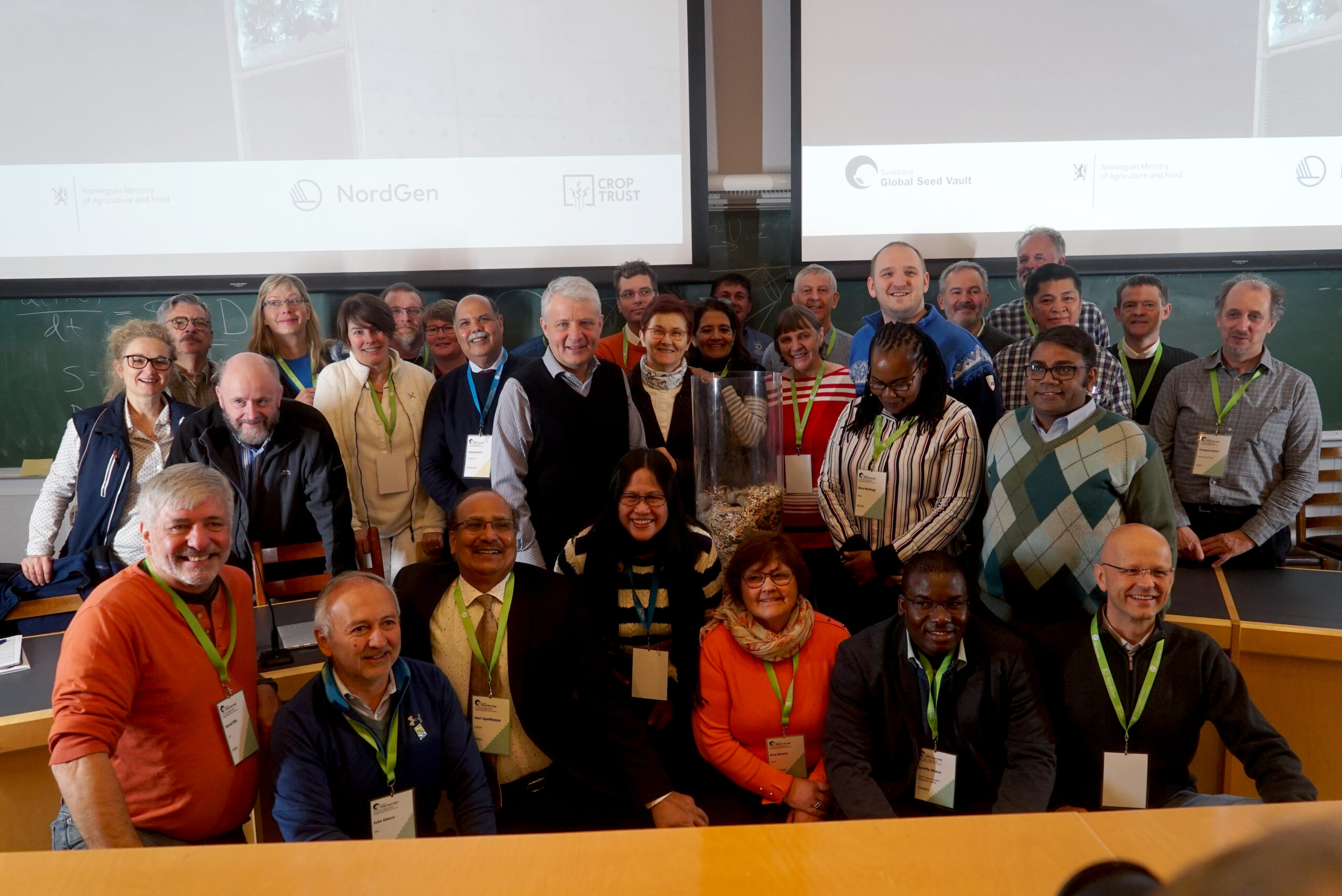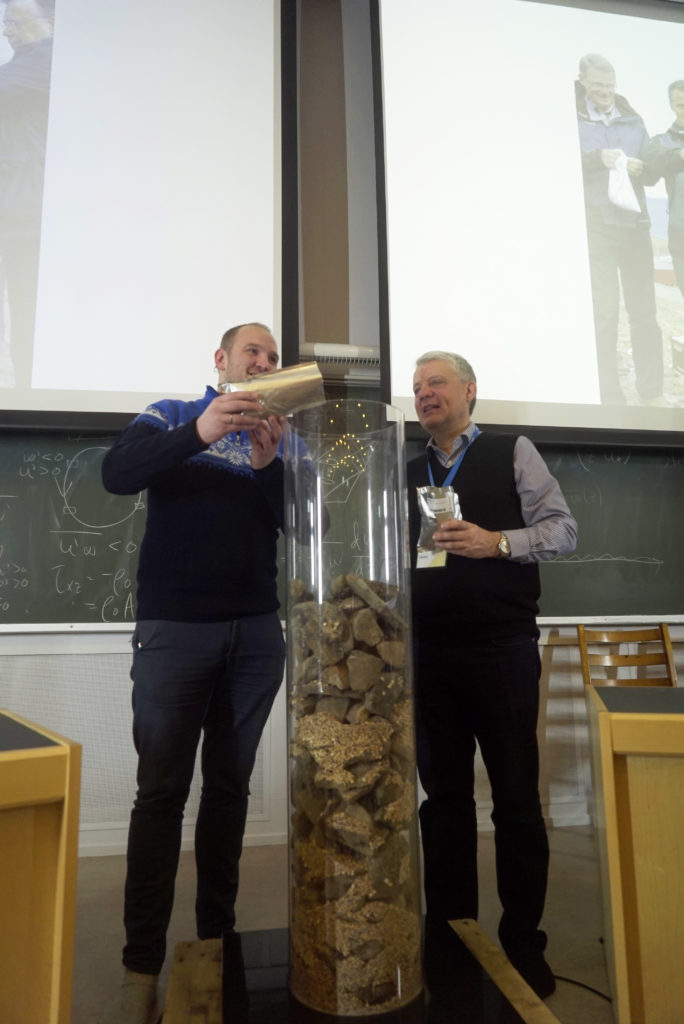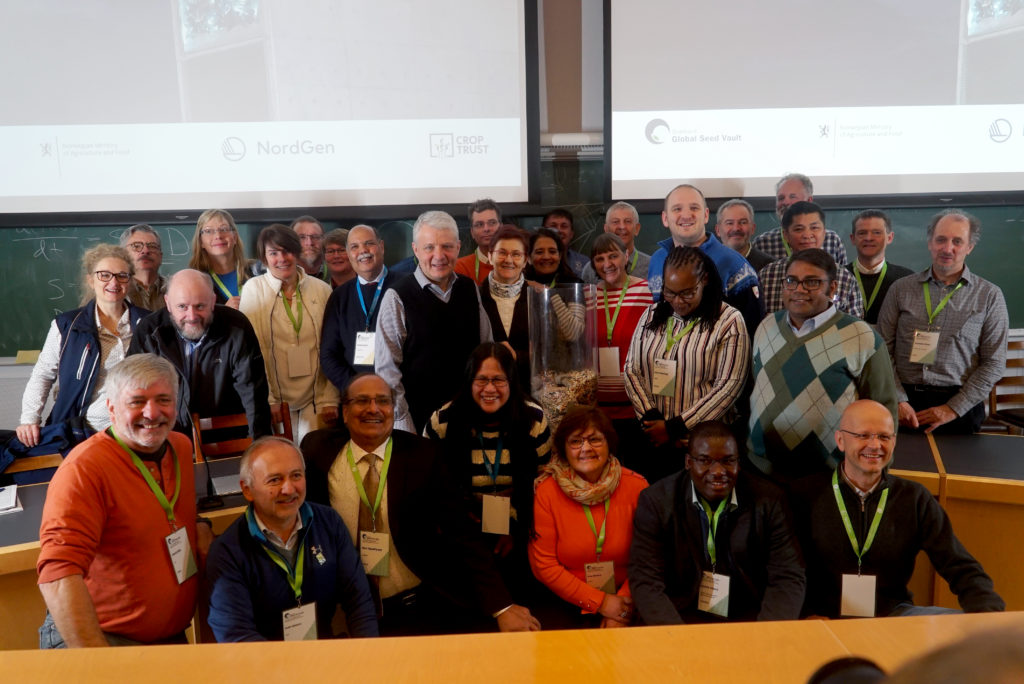
The monument was established in 2006, when the decision for building the Seed Vault was announced. As a part of the 10 year celebration, representatives from 27 gene banks added seeds of their important crops to the glass cylinder.

It was a symbolic act of significant importance when the gene bank representatives from all over the world poured seeds into the foundation stone and seed glass cylinder. Food and forage crops important for future food security were presented, and it became evident that future food supplies are highly dependent on a broad range of crops and plant species. All the species are well represented in the collections conserved in the Seed Vault.
Barley and beets – important Nordic crops
The globally important cereals as maize, wheat and rice were brought to Svalbard from many parts of the world. More regionally important crops as chickpea, sorghum, lentils and different millets were presented from different continents. Peas and beans of different species and forms are important in several regions. The US-based Seed Savers Exchange presented the ‘Norwegian Pencil’ bean, a bean variety that probably has been used in Norway in former times and is now conserved thanks to Norwegian immigrants and to plant enthusiasts in the United States.
The Foundation Stone ceremony was started by the Norwegian Minister of Food and Agriculture Jon Georg Dale and Secretary General of the Nordic Council of Ministers Dagfinn Høybråten who poured seeds of Nordic importance. Dale presented seeds of two older varieties of barley, important for the development of Norwegian barley production, and Høybråten followed up with three varieties of beets, a crop plant that provided vegetables and forage and made sugar production possible in the colder Nordic region.
The Foundation Stone Cylinder is conserved at Svalbard Museum in Longyearbyen, who has a nice exhibition about the Svalbard Global Seed Vault.

Agriculture and Food to add seeds of global and regional importance to the symbolic seed cylinder at
The Svalbard Global Seed Vault. First row from the left; David Ellis (Peru), Iván Matus (Chile), Hari
Upadhyaya (India), Teresita Borromeo (The Philippines), Ana Maria Barata (Portugal), Justify Shava,
(Zambia) and Peter Wenzl (Colombia). Second row; Lise Lykke Steffensen (NordGen), Michael Abberton (Nigeria), Dagfinn Høybråten (Nordic Council of Ministers), Alice Muchugi (Kenya) and Rajeev Varshney (India). Third row; Beate Schierscher, (Switzerland), Ahmed Amri (Morocco), Gordana Djuric (Bosnia & Herzegovina), Jean Hanson (Ethiopia), Jon Georg Dale (Norway), Suwit Chaikiatiyos (Thailand) and Graziano Rossi (Italy). Fourth row; Arthur da Silva Mariante (Brazil), Külli Annamaa (Estonia), Dallas Kessler (Canada), Sally Norton (Australia), William Solano (hidden)(Costa Rica, Maarten van Zonneveld (Taiwan), Ramni Jamnadass (Kenya), Steve Hughes (Australia), Ruaraidh Sackville Hamilton (The Philippines), Lee Buttala (USA), Thomas Payne (Mexico), and Garry Duffy (Ireland).
